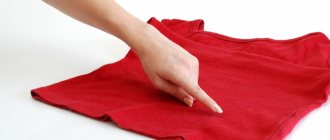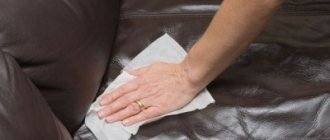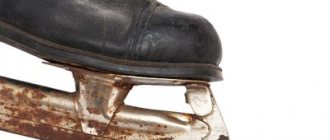Raw sheep should never be immediately used to make a planned product. First you need to clean it. Raw wool always contains debris. In addition, it is necessary to get rid of the sheep odor. Naturally, working with unclean material is unpleasant, to say the least. However, washing and cleaning raw wool is quite labor-intensive and requires some knowledge. After carefully reading this article, you will learn how to wash sheep's wool at home.
Before washing sheep wool, prepare everything you need:
- You can wash the raw material with a special washing powder for wool products. You can also use animal washes. Regular washing powder should not be used because the wool will be difficult to rinse.
- Grease-dissolving agents or dishwashing liquids work well to remove grease from fur.
- You will need a washing container, a colander and a wire rack. A cat litter box with a grate, familiar to many, would work well. The grate will be useful to you in order to more conveniently manage the wool - lowering and removing it from the water. It is not very pleasant to take out unwashed wool with your hands and, in addition, the grid will help you conveniently collect the wool when you change the water. It should be noted that you will have to change the water more than once.
- To avoid unpleasant odor from wool, you can stock up on a respirator.
- To dry the raw material, use a mesh or gauze.
- You will also need a comb, preferably a wooden one.
Recovery after washing
To maximize the life of a sheepskin, it is important to pay attention not only to the fur, but also to the leather side.
You can soften the skin after cleaning with a natural fatty product that will soften and increase the elasticity of the skin. You can use vegetable oil (olive, sunflower), melted pork or lamb fat. You can use vegetable oil (olive, sunflower), melted pork or lamb fat.
Lubricate the skin and leave it to dry slowly (slowly!). When placed on the radiator, it will quickly harden and the lubricant will not be absorbed. The ideal drying temperature is about 18ºC.
Care Tips
The following tricks will help keep the fur and leather base in good condition:
Give a beautiful shine
Take several walnuts, chop them thoroughly and wrap them in thin cloth or gauze, then carefully run it over the fur in the direction of hair growth. Soften skin
Take a little Vaseline, carefully lubricate the lower part of the skin with it and knead it well. Get rid of unpleasant odor
Soda is mixed with a few drops of essential oil, the fur is treated with the resulting composition and left to act for a day. After this, the remaining product is combed out. Make the fur soft and elastic. The product is thickly covered with any starch and left to act for half an hour, and then shaken off or combed out with a special brush. Raise the pile. If the fur is a little caked, then regular oat bran will help. They are placed in a dry frying pan and heated, after which they are poured onto the sheepskin and allowed to cool. Then the product is shaken out and the fur is combed out with a brush.
The above recommendations will not require large time or financial investments, thanks to them the sheep's skin will always be clean and well-groomed. Caring for sheepskin products is not as difficult as it might seem at first glance
It is important to take time to care for your item daily and wash it periodically to remove large stains.
Nowadays, in many homes you can see sheepskin used as carpeting. Sheepskin not only retains heat well, but is also safe for human health and does not cause irritation or allergies. Sheepskin is the best solution for the home.
Sheepskin skins have long been especially popular. They were used to make hats, outerwear, and shoes. Today, sheepskin is increasingly used in non-standard forms, for example, as material for bags or bedspreads.
Sheepskin can absorb dirt well. This means that she requires constant care. This can be dry clean. Can sheep skins be washed? Not only is it possible, but it is necessary! After all, only by washing can you get rid of pathogenic microbes.
Basic rules of care:
- Light stains can be removed by lightly shaking the product.
- Vacuuming the surface helps remove dust.
- To clean the fur covering, treat it with a solution of ammonia and water.
- To treat the fur, you need to use a sponge.
- To restore the brightness of sheepskin, its surface can be treated with walnuts. To do this, you need to wrap several nut kernels in gauze and clean the surface of the skin with them.
- If the fur of the sheepskin is quite coarse, it can be softened. To do this, prepare a mixture of yolk, Vaseline and water. Apply it to the surface of the sheepskin leather.
How to wash sheepskin by hand:
- It is recommended to wash at least once a month.
- Use a liquid carpet or wool detergent.
- Fill a bowl with warm water and dilute the cleaning product in it.
- Soak the skin in water for 20-30 minutes.
- Wash the sheepskin carefully.
- To rinse the product, use warm running water.
- To dry the skin, it must be placed on a horizontal surface, leather side down. Gently blot the product with a terry towel.
- To prevent the skin from deforming, it must be periodically stretched and shaken.
- For final drying, leave the skin in a well-ventilated room.
How to wash sheepskin in a washing machine:
- Choose liquid cleaning products with gentle properties. The most optimal products are for cleaning wool products.
- To wash, select the “wool”, “delicate” or “hand wash” cycle. The temperature should not exceed 40 degrees. For the spin procedure, set no more than 600 revolutions. For heavy soiling, you can turn on an additional rinse.
- A clean product must be dried on a horizontal surface. Shake and stretch it periodically. The fur covering should be on top.
- To return the product to its original appearance, the skin must be combed. To do this, take a special fur brush. Its bristles should be made of wire.
- To soften the skin, you need to knead it well with your hands.
- Follow the basic rules for storing sheepskin.
- protkan.com
- 2stiralki.ru
- hozzi.ru
- family-info.ru
Types of wool blankets
To find out whether a sheep's wool blanket can be washed, you should examine the label sewn to one of the corners of the product. If there is none, you need to independently determine what type of blanket it is and what cleaning methods are applicable to it:
- Fur blankets are fluffy blankets that have sheep wool fibers attached to both sides. Such products are not recommended to be washed; dry cleaning is acceptable.
- Quilted - characterized by the presence of a fabric cover, inside of which there is a woolen fabric. A characteristic feature is the presence of special stitches that stitch through the entire blanket along with the cover. This allows for both machine and hand washing of the material.
- Solid fabric blankets are not thick but durable blankets that are recommended to be cleaned rather than washed. For heavy soiling, hand washing is allowed.
Dry cleaning can clean any wool blanket effectively and effortlessly. However, washing it yourself will help bring the blanket back to normal without significant financial costs.
The product label must indicate how it should be cleaned and what types of drying, washing and spinning can be used.
The recommended frequency of cleaning blankets is once every six months, and regular blankets - annually. The benefits of sheep wool for human health have been confirmed by studies that have proven its beneficial effects on joints and muscles, as well as the ability to increase blood circulation and reduce pain in the lower back and back. Thanks to the natural fat content of lanolin, wool accumulates dirt only on the surface of the blanket, while the inside remains clean.
How to properly wash sheepskin in a washing machine
If the product needs intensive cleaning, then it can be washed in an automatic washing machine. The secret to success is the correct mode, suitable temperature and special detergent.
Choosing a detergent
Before washing sheepskin, it is better to familiarize yourself with the range of detergents. To care for natural fur, special household chemicals are suitable. It is not recommended to use powders; soft gels are the best choice.
Table 1. Which products are best to choose for washing natural sheepskin in an automatic washing machine.
| The product's name | detailed information |
| Weasel, Vorsinka | A delicate gel that gently but thoroughly cleanses fur products. It has an affordable price and economical consumption. |
| Help for delicate washing | Suitable for machine washing of wool and fur items. Minimizes the risk of shedding, shrinkage and lint loss. |
| Dreft "Wool" | Gel for delicate automatic washing. Gives the product softness, a pleasant aroma and fights static electricity. |
We recommend:
Pros and cons of an induction cooker
Any ready-made product should be used in accordance with the instructions on the label.
As an extra precaution, you should use a laundry bag. It will protect the pile from friction against the drum
Water temperature and washing mode
Fur should be washed according to the same algorithm as wool products
It is important to avoid exposure to high temperatures. Hot water causes shrinkage, lint loss, loss of color and deformation of natural sheepskin products. It is best to set the temperature to no more than 30 degrees for an average wash duration
Another important condition is the number of revolutions. The optimal regimes for caring for natural sheepskin are considered to be:
It is best to set the temperature to no more than 30 degrees for an average wash duration
Another important condition is the number of revolutions. The optimal regimes for caring for natural sheepskin are considered to be:
Wool. This program requires a minimum number of drum rotations, low water temperature and no spin.
In essence, it is similar to long soaking and gentle hand washing. Delicate mode
Designed for the care of capricious materials subject to deformation and shedding
Delicate mode. Designed for the care of capricious materials subject to deformation and shedding
Perfect for cleaning natural sheepskin in a machine. Handwash. Soft mode, the number of revolutions per minute, as a rule, does not exceed 600. Can be used to wash soiled sheep fur products. Additional rinsing or intensive washing is completely eliminated. Silk. Another program that eliminates strong friction and hot water. Suitable for sheepskin of any color.
Is it possible to use spin
Wet sheepskin has an impressive weight. It is very difficult to squeeze it out by hand, but you should not trust this crucial moment to a washing machine. Automatic spinning is very aggressive and negatively affects the quality of fur. Best solutions:
- Leave the product in the drum of the machine for a while. After completing the no-spin program, the skins do not need to be removed immediately. After 30-50 minutes it will drain on its own without unnecessary friction.
- Remove the skin immediately and place it in the bathroom. Another method is to place the skin on the edge of the bathtub and let the moisture drain out. This way you can not only get rid of excess liquid, but also avoid jamming the product.
- Lay out natural sheepskin on towels. The method is suitable for small products and allows you to reduce the risk of product deformation to zero. Terry towels are best for absorbing excess moisture. When they become wet, they should be replaced with dry ones.
It is worth knowing that natural sheepskin should not be dried vertically after washing. Products cannot be hung on ropes. The only acceptable method of vertical drying is placing clothes on hangers.
With salt without soap
This folk method removes dirt from wool fibers well and preserves their color. Therefore, table salt is used for both white and colored products. The fleece must be cleaned before washing.
Further actions are carried out according to the algorithm:
- Fill a bowl with hot water and soak the material in it. After 20–30 minutes, drain the dirty water and use a colander to get rid of excess moisture.
- Prepare a saline solution in a basin (30 g of table salt per 1 liter of water).
- Dip raw sheep into it and leave for 1.5–2 hours. Then drain the dirty water and repeat the procedure 2-3 times.
- Rinse the wool with plenty of cold water.
Video: Washing, sorting, combing sheep's wool with hand combs
How to get rid of stains?
If stains appear on the sheep skin or it turns yellow, resort to the help of improvised means. They act carefully without harming the product. The fresher the stain, the easier it is to get rid of it.
Yellowness
Hydrogen peroxide is used to make wool white. To prepare the solution you will need:
- 1 liter of water.
- 2 tbsp. l. peroxide.
The solution is poured into a spray bottle and the wool is sprayed with it. Do not allow the product to come into contact with the undercoat or skin. After 10-15 minutes, the sheepskin is rinsed in warm water.
If a small area has been treated, wipe it with a damp, clean cloth.
Fat
To remove greasy stains, use baking soda or talc.
Procedure:
- Sprinkle the stain with baking soda and press it down with a paper napkin.
- Leave the product to act for 4 hours.
- Comb out the fur with a brush or wash it.
If the stain is old, then strengthen the recipe with a small amount of dishwashing detergent. In this case, you won’t be able to do without washing.
Coffee and tea
Glycerin helps remove stains from spilled tea or coffee.
Rules for its use:
apply the product to the contaminated area; leave for 10 minutes; wash the item in warm water with shampoo, paying special attention to stains.
If you were unable to remove traces of drinks the first time, you can repeat the procedure without waiting for the wool to dry.
Salinity
During active use, the fur becomes greasy in certain places. You can deal with the problem without washing the skin.
Procedure:
- Sprinkle the greasy area with salt.
- Distribute it evenly over the skin.
- Leave the salt for 2 hours.
- Brush out the skin.
If the greasy shine has not been eliminated, use table vinegar diluted with water in a 1:1 ratio.
It is applied with a sponge or cotton pad. After 15 minutes, the skin is rinsed in warm water, dried and combed.
To give the sheepskin a beautiful shine, several walnut kernels are crushed, wrapped in gauze and gently moved over the wool, in the direction of its growth.
Wine
You can remove red wine stains from sheepskin using gasoline. To give it thickness and enhance the effect, starch is used.
Procedure:
- the paste is applied to the fur using a sponge;
- leave the product for 10 minutes;
- wipe it with a cloth soaked in clean warm water.
When removing a stain, you need to move in the direction of the pile.
LiveInternetLiveInternet
—Categories
- February 14 (31)
- February 23 (7)
- Aquarium (1)
- Aromatherapy (0)
- Library (4)
- Bonuses (2)
- Be healthy (26)
- Crochet (158)
- Accessories (11)
- Children's clothing (12)
- For home (37)
- Toys (39)
- Motives (27)
- Clothes (5)
- Booties (4)
- Equipment (6)
- Patterns (4)
- Knitting (19)
- Details (1)
- Toys (3)
- For kids (2)
- Clothes (5)
- Booties (5)
- Patterns (1)
- Dacha (6)
- Vegetable garden (2)
- Garden decor (1)
- Diary (1)
- House (18)
- Blanks (17)
- Jam (14)
- Ideas (5)
- Interior (2)
- Calendar (1)
- Computer (2)
- Cutting and sewing (14)
- Children's clothing (7)
- Toys (3)
- Maslenitsa (20)
- Massage (2)
- Music (6)
- New Year (55)
- Numerology (1)
- Rituals (14)
- Diary design (1)
- Easter (35)
- Useful tips (10)
- Travel (3)
- Recipes (541)
- Melon (5)
- Watermelon (3)
- Lamb (8)
- Pancakes/Pancakes (29)
- Main courses (2)
- Baking (10)
- Mushrooms (7)
- Desserts (32)
- Blanks (3)
- Snacks (33)
- Zucchini (5)
- Potatoes (7)
- Strawberry (1)
- Candy (32)
- Cream (1)
- Chicken (26)
- Flatbread/Pizza (12)
- Seafood (29)
- Carrots (1)
- Cookies (33)
- Pies (11)
- Tomatoes (1)
- Salads (36)
- Pork (15)
- By-products (14)
- Soups (28)
- Cottage cheese (4)
- Cake/Pie (91)
- Pumpkin (18)
- Minced meat (11)
- Bread (29)
- Apples (5)
- Figure (11)
- Handicrafts (160)
- Beads (8)
- Second life for old things (8)
- Embroidery (1)
- Cross stitch (9)
- Ribbon embroidery (1)
- Decoupage (14)
- Dolls (2)
- Modeling (1)
- Macrame (13)
- Soap making (2)
- Papier-mâché (1)
- Newspaper weaving (26)
- Pillows (6)
- Bags (3)
- Gift Wrapping/Cards (18)
- Garden and vegetable garden (16)
- Beauty salon (43)
- Hair (9)
- Face (13)
- Manicure (10)
- Hairstyles (2)
- Hands (6)
- Self-knowledge (6)
- This and that (4)
- Herbs (22)
- Farm (1)
- Movies (2)
- Photo (1)
- Feng Shui (4)
- Persimmon (3)
- Halloween (20)
- Flowers in the house (16)
—Search by diary
—Subscription by e-mail
— Regular readers
-Statistics
Dry cleaning method for sheepskin products
Before washing sheepskin, you should carefully examine it, assess by eye the area of contamination and the complexity of the stains to be removed. To eliminate stubborn stains, you should never use bleach, as it deforms the fur. If you are not sure that the task can be handled at home, it is best to trust a specialist.
- Hang the skin on the back of a chair and clean it with a vacuum cleaner. Just do not turn on the unit at full power, otherwise it may accidentally suck in fluff along with dirt, which already weakly adheres to the skin. In this case, the product may simply become bald after cleaning.
- If the sheepskin is not dirty, but only dusty (for example, after lying in a closet for a long time), it is enough to sweep it with a broom or beat it out in the fresh air using a plastic carpet beater. The main thing is not to overdo it, otherwise the fur will crawl in all directions, and it will be difficult to bring the skin into proper shape.
- If the snow is clean in winter (for example, in the courtyard of a private house), you can use the old, “grandmother’s” method, which is often used when beating carpets. The sheepskin is laid on the snow with the wrong side out, and the cleaner rhythmically beats it with a wooden stick or a “carpet beater”, as if beating dirt out of the sheep’s wool. After this, the skin is straightened and dried in a vertical position.
- If you have the desire and free time, you can wash the product by hand in warm (not hot!) water. Since sheepskin is animal fur, instead of soap or washing powder, you can take any shampoo: adult, children's, for cats, dogs or horses.
You can clean a white sheep's wool product using Vanish bleach, which is popular among housewives. The product is diluted with water in a one to one ratio until a thick soap foam is obtained. Next, a sponge is moistened in this foam, which must be used to rub the stain, applying physical effort. After the stains have completely disappeared, you need to take another, clean sponge and wash the product until all the foam is removed from it.
The only disadvantage of this method is that the skin gets completely wet (as with hand washing with shampoo), which means it will take up to three to five days to dry. In a room with high air humidity, the product will take longer to dry than outside. Therefore, it is better, if possible, to hang the sheepskin at least on the balcony (after squeezing it out, but without twisting it).
If the skin is small, you can “comb” it using an old shoe brush. This should be done strictly in the direction of pile growth, but not “against the grain.” If you do not comb the sheepskin right away, while it is still wet, then it will be much more difficult to do this, and the skin will take on a sloppy, unkempt appearance. The same goes for soft toys made from this material, so popular in Soviet times.
If the housewife does not know how to wash sheepskin at home, it is best to refrain from experiments and simply take the product to the dry cleaner. In this case, you should clarify in advance whether a particular organization works with natural skins. Here's what to keep in mind when leaving the skin in the hands of specialists:
- You must take a check. It can be presented if the product is lost for some reason.
- Dry cleaning employees are required to provide a guarantee to the client. If any claims arise during the warranty period, the client has the right to contact the service staff.
- If you are handing in a children's product for cleaning, you need to check with the employees exactly what technologies are used to work with natural skins. If sheepskin is cleaned using aggressive chemicals, it is better to clean the skin at home using improvised means. Otherwise, a child wearing dry-cleaned clothes may develop an allergy.
- Before handing over the product to specialists, it is advisable to clean at least the most severe dirt yourself; this will be an elementary show of respect towards employees. In some organizations, clients are warned in advance that clothes must be returned cleaned of obvious stains. This requirement should not be neglected.
Features of wool when washing
Wool is a natural raw material. In general, it is divided into living and dead. The first is sheared from live sheep, the material is characterized by increased softness, wear and durability. Wool, called dead wool, has much worse characteristics because it is obtained from slaughtered animals in slaughterhouses. Before looking for the answer to the question of how to properly wash woolen products, you need to find out what type of material will be processed. Today the following varieties are known:
- camel's wool;
- merino (a special breed of fine-wool sheep that is shorn only at the withers);
- cashmere (down from Tibetan goats);
- mohair (fur from Angora goats);
- Angora (fluff obtained from very fluffy Angora rabbits);
- alpaca (a type of wool obtained from Peruvian llamas).
The labels will help you figure out at what temperature to wash wool. The fact is that natural wool is a very fancy material. In particular, when washing it can:
- deform;
- change color;
- sit down;
- lose natural softness.
Decoding symbols for caring for natural wool products.
Often, washing wool, or more precisely, white items, ends with them turning yellow. In addition, pilling often occurs on washed woolen clothes.
Products used for cleaning fur
In order for the cleaning of fur products to be most effective, it is necessary to use special cleaning products for this. For example, light-colored outerwear can be perfectly cleaned using ordinary purified gasoline. For this purpose, the fur coat or jacket should be shaken well in the air, then gasoline should be applied to the pile with a soft brush, while ironing it according to the growth of the fur.
If, during the above procedures, stains of dirt are found on the fur product, they should be wiped with a cloth along the pile. After you finish cleaning, the product will need to be placed in the open air to remove the smell of gasoline. In addition, such ventilation will allow it to dry faster.
Light-colored outerwear can be perfectly cleaned using ordinary purified gasoline.
If light fur has turned yellow over time, it can be cleaned with a weak solution of hydrogen peroxide. To do this, peroxide (1 tsp) is diluted in 1 glass of warm water. Next, you need to soak a sponge in the prepared solution and use it to clean the contaminated areas, following the direction of the growth of the pile. After this, the fur coat is dried. By the way, experienced housewives advise adding 5-6 drops of ammonia to the described solution.
There is also a recipe for washing a fur coat using ordinary shampoo. To do this, they usually take one that does not contain a balm, with a neutral factor and without color. It is diluted in an amount of 1 tsp. per glass of water. The cleaning procedure itself is similar to that described above.
If you have regular starch on hand, you can also use it to clean the fur. To do this, the powder is generously scattered over the product, and then thoroughly combed out with a soft brush. You can choose a replacement for this product - for example, oatmeal. The main thing is that such a replacement is natural, cleans dirt well, and is easy to apply and remove from the surface of the fur.
If you have regular starch on hand, you can also use it to clean your fur.
For this purpose, they are fried in a heated frying pan. After this, the flakes that have not yet cooled down should be scattered over the surface of the fur coat and combed out. Next, it is ventilated in fresh air, shaking occasionally.
There is also a product that allows you to add shine to the fur of your fur coat or jacket. This is glycerin. A rag is moistened in it and the product is wiped. After this, the product is combed out and dried in the shade.
Glycerin will add shine to your fur coat
How to dry it after?
After washing, you need to dry the blanket properly. This process requires certain knowledge:
The product should be dried only after all the water has completely drained;- it is laid out on a flat surface with a terry towel placed underneath; it needs to be changed as it gets wet;
- during the drying process, the product is turned over several times;
- when the bulk of the water has evaporated, the blanket can be hung on a rope to dry it;
- Do not place it near heat sources, near a radiator or gas stove.
If after drying the bedding has lost its shape, you need to shake it several times and beat it with your hands.
General Tips
Housewives with experience know that washing sheepskin is allowed both by hand and in a washing machine.
To keep the products in their original form, you need to know some cleaning secrets, and even after washing, sheepskin will require attention.
Before washing sheepskin at home, you should learn the secrets of washing, using which the product will always look like new:
Washing in a washing machine or by hand is done with a liquid detergent; it is better washed out when rinsing. It is not advisable to use powdered substances; they dissolve poorly and remain on the pile of products. The procedure is carried out at a temperature no higher than + 30. Pre-soaking for products of this type is unacceptable. The use of stain removers and bleaches, even gentle ones, is strictly prohibited. It is important to dry correctly, otherwise the product will become deformed. Ironing or steaming sheepskin products is contraindicated.
Proper care will help avoid frequent cleaning; washing sheepskin in the washing machine or by hand is not allowed often, no more than once a month.
Sheepskin slippers can only be washed by hand; they will not tolerate machine washing well, even on a delicate cycle.
Safe products and tools
When cleaning manually, it is recommended to use special brushes and sponges. They allow you to comb out dirt, dust, and remove small debris. The choice of tools depends on the goal:
- Stiff brushes deal with stains. They are used only in areas of intense pollution. In other places, the massaging effect of the hands is enough.
- Dirt often accumulates on the surface near pockets, belts, buttons, and in the seam area. Rubber brushes or a stationery eraser are used for cleaning.
- Rubber or regular sponges for washing help to whip up the foam.
Combing the skin is done with hard brushes. It could even be a cat comb or products made from wire.
Safe chemistry
Only special products can be used to clean sheep's wool. Ordinary powders cannot be used, even if they are pre-dissolved. They are difficult to wash off, can damage the surface, and after use the wool becomes dull and loses softness.
You should also avoid preparations containing chlorine. This substance has a destructive effect on wool.
The cleaning agent must be liquid and have gentle properties. A distinctive feature of most preparations suitable for wool is the presence of lanolin as an active ingredient. It ensures the safety of the fibers.
At home, preparations for washing and removing stains are used, for example:
- Henkel . Available in the form of a liquid concentrate that preserves the tenderness and softness of things. Has a pleasant aroma. Easy to rinse.
- Wool Care . Prevents hair from rolling and copes well with cleansing in cold water.
- Sommieres Powder . Designed to remove greasy stains. The product is applied to the contaminated area and left for several hours. Then remove it carefully with a napkin.
- Living Licker Konz. Restores shine, cleanses, gives softness.
- Ultra Finish Milk . Designed for cleaning, eliminating the appearance of sticky fluff, and restoring shine.
- Vanish . The product is mixed with water, then whipped until foamy and applied to the product with a sponge.
- Villi . The domestic product is perfect for hand washing.
In some cases, it is recommended to use regular hair shampoos or gels. But they are intended for a completely different purpose and do not contain the component necessary for cleaning wool, so it is better not to take them.
Along with cleaning products, you can use soft rinses, conditioners, and balms. are used .
How to clean sheepskin
For minor stains, the dry method of cleaning the fur surface is ideal. It will help those who are worried about how to clean white sheepskin. It is necessary to unfold the product and clean it first with a vacuum cleaner. Then take starch and sprinkle the pile with it. The starch should be rubbed into the pile with your hands.
Regular wet cleaning is also used, but for this you need to have products intended for carpets or items made of natural wool. To do this, warm water is taken into a large basin or bathtub and a special product is added to it. After which you can load the product by soaking it for 30 minutes.
It needs to be washed carefully by hand to remove light dirt. If there are more persistent ones, then it is better to treat them purposefully. Then the item should be rinsed, but only in warm water. Temperature changes during washing will negatively affect the appearance of the material. When clean and with the pile facing up, lay the skin horizontally and blot it with a terry towel.
Machine washable
This method is the simplest and easiest. However, it is suitable if the item is not too large and can be loaded into the washing machine. For this wash, use only detergents intended for woolen items. Other means are not recommended.
After washing, the fur rug can be dried as usual. When it becomes dry, it must be combed using a special wire brush for fur.
All these rules will help keep the product in good condition after washing and drying and continue to use it.
Very noticeable stains can be easily removed using a mixture of ammonia and cold water. You need to take these components in equal parts, moisten a sponge in the solution and apply it to the stains. If the dirt is old, then you can use stain removers or a special stain remover powder for fur.
Walnut kernels will help remove dull fur. They need to be crushed, wrapped in gauze and rubbed until shiny. This product helps restore color and add brightness to a fur product.
If yellowness appears, it can be removed with hydrogen peroxide. You need to make a solution of 1 liter of water and 2 tablespoons of 3% hydrogen peroxide. They only need to wash the surface layer of the product to whiten it. You can’t rub it deeper so as not to spoil the skin.
Along with the lint, the leather layer also becomes dirty. Potato peelings will help return the sheepskin to a fresh look on both sides. They must be washed thoroughly and squeezed well. Then grind the peelings in any way. Spread the prepared pulp in a thin layer on the surface and clean with a brush. After this, remove everything from it with a dry cloth.
The lost softness of the fur is given with a mixture of 1 chicken yolk and 1 tablespoon of Vaseline. The leather part is treated with a homogeneous composition, after which the remaining product is removed. Lost elasticity can be achieved by using glycerin with water.
If a foreign smell appears, the fur is matted or thinned, then in this case the rules for caring for the products are not followed. With proper care, you can count on a long service life of natural and warm fur items.
You can read about how to clean sheepskin at home on the Internet, as well as in specialized literature. If the chosen method does not seem to be very effective or is rather dubious, you should first test the recommended cleaning composition on a small area of the skin. This way you can avoid unpleasant surprises.
If, however, there is a need to use special preparations, you should carefully read the instructions before using them, and also protect your eyes and hands to avoid severe chemical poisoning or allergies. Those who often deal with fur (for example, specialists in sewing fur coats and hats) prefer to clean such products without going to dry cleaning because:
- If dry cleaning is not done manually, but using special machinery, the delicate structure of sheep skin can easily become deformed.
- The services of professionals are quite expensive, because the total cost of services, in addition to cleaning costs, also includes other expenses (for paperwork, warranty, staff salaries).
- Unscrupulous or incompetent employees of dry cleaners and laundries often lose customers' items.
- If a specialist currently has a lot of orders, the client will have to wait at least several days, or even several weeks. There is no point in sending a fur coat or hat for cleaning if you can only get it closer to spring.
Care Tips
- In order for the sheepskin fur to retain its fluffiness as long as possible, it must be combed. To do this, you will need to buy a special brush, which is sold in any zoological store.
- When exposed to sunlight, the fur may fade. This applies not only to sheepskin, but also to any other natural fur. Exposure to high temperatures is also undesirable, as the sheepskin will dry out and become brittle and stiff. These features should be taken into account when drying the covers; hang them in a dry, cool and dark room. When the covers are in the car, the sun's rays do not harm them, since the glass provides ultraviolet protection. Sheepskin is not afraid of moisture, but this does not mean that it can be left wet.
- Storing sheepskin covers in cellophane is unacceptable. This fur must breathe. It is better to purchase a bag for storing them, made from natural material.
- There are two ways to get rid of dirt. Wait until it dries and brush it out with the brush we already talked about above. If it doesn’t help, then take a sponge and soap solution in your hands.
- If grease gets on the fur, it is necessary to treat the area of contamination with gasoline, first applying it to a clean cloth or sponge. After wiping the fur with gasoline, you will need to treat the area of contamination with a damp cloth and dry the cover. The skin cannot be processed in any way and must not be exposed to moisture.
If you follow all these recommendations and take proper care of your covers, they will serve you for many years and will delight you with their beautiful appearance.
Sheepskin is a popular material with a wide range of applications. Sheep skins are used to make fur coats, collars for insulated outerwear, home rugs, capes and car seat covers. For many peoples, an indispensable attribute of clothing is a sheepskin hat.
Over time, the question of cleaning dirty white skin inevitably arises. The purification of this material has a number of features. If you decide to get rid of dirt on a sheepskin product, you can use dry cleaning services, or you can do it at home, having first studied the information on how to clean sheepskin.
The main causes of sheep wool contamination
If you do not properly care for products made from sheep's wool, they will become yellow.
Usually both layers get dirty. Dirt gets stuck between the long, thick fibers. It is quite difficult to pick it out from the rolled up hairs. Spilled coffee and liquids with artificial and natural dyes are also quickly absorbed into the loose layer of the product.
Lack of regular care leads to the fact that the fur becomes dull and acquires a yellowish tint.
How to properly wash sheepskin in a washing machine
If the product needs intensive cleaning, then it can be washed in an automatic washing machine. The secret to success is the correct mode, suitable temperature and special detergent.
Choosing a detergent
Before washing sheepskin, it is better to familiarize yourself with the range of detergents. To care for natural fur, special household chemicals are suitable. It is not recommended to use powders; soft gels are the best choice.
Table 1. Which products are best to choose for washing natural sheepskin in an automatic washing machine.
| The product's name | detailed information |
| Weasel, Vorsinka | A delicate gel that gently but thoroughly cleanses fur products. It has an affordable price and economical consumption. |
| Help for delicate washing | Suitable for machine washing of wool and fur items. Minimizes the risk of shedding, shrinkage and lint loss. |
| Dreft "Wool" | Gel for delicate automatic washing. Gives the product softness, a pleasant aroma and fights static electricity. |
Any ready-made product should be used in accordance with the instructions on the label.
As an extra precaution, you should use a laundry bag. It will protect the pile from friction against the drum
Water temperature and washing mode
Fur should be washed according to the same algorithm as wool products
It is important to avoid exposure to high temperatures. Hot water causes shrinkage, lint loss, loss of color and deformation of natural sheepskin products. It is best to set the temperature to no more than 30 degrees for an average wash duration
Another important condition is the number of revolutions. The optimal regimes for caring for natural sheepskin are considered to be:
It is best to set the temperature to no more than 30 degrees for an average wash duration
Another important condition is the number of revolutions. The optimal regimes for caring for natural sheepskin are considered to be:
Wool. This program requires a minimum number of drum rotations, low water temperature and no spin.
In essence, it is similar to long soaking and gentle hand washing. Delicate mode
Designed for the care of capricious materials subject to deformation and shedding
Perfect for cleaning natural sheepskin in a machine. Handwash. Soft mode, the number of revolutions per minute, as a rule, does not exceed 600. Can be used to wash soiled sheep fur products. Additional rinsing or intensive washing is completely eliminated. Silk. Another program that eliminates strong friction and hot water. Suitable for sheepskin of any color.
Is it possible to use spin
Wet sheepskin has an impressive weight. It is very difficult to squeeze it out by hand, but you should not trust this crucial moment to a washing machine. Automatic spinning is very aggressive and negatively affects the quality of fur. Best solutions:
- Leave the product in the drum of the machine for a while. After completing the no-spin program, the skins do not need to be removed immediately. After 30-50 minutes it will drain on its own without unnecessary friction.
- Remove the skin immediately and place it in the bathroom. Another method is to place the skin on the edge of the bathtub and let the moisture drain out. This way you can not only get rid of excess liquid, but also avoid jamming the product.
- Lay out natural sheepskin on towels. The method is suitable for small products and allows you to reduce the risk of product deformation to zero. Terry towels are best for absorbing excess moisture. When they become wet, they should be replaced with dry ones.
It is worth knowing that natural sheepskin should not be dried vertically after washing. Products cannot be hung on ropes. The only acceptable method of vertical drying is placing clothes on hangers.
Sheepskin is a natural material consisting of sheep skin with fur. It is used to sew sheepskin coats, make rugs and chair covers, covers for car seats, blankets and blankets. It retains heat perfectly and maintains a feeling of comfort. However, sheepskin, like any other material, can become dirty and lose its attractive appearance. Moreover, mold fungi and mites can develop in thick fur, which, together with dust clogged between the fibers, create an ideal environment for the proliferation of pathogenic microbes and the development of allergic reactions. Not only does sheepskin become dull and turn into a matted gray lump, but it can also emit an unpleasant, musty odor. And then there is only one way out - you need to wash it.
How to wash woolen items
Wool clothing is very popular, it is warm, practical and beautiful. In every person's wardrobe you can find mohair, cashmere or velor items. When buying things, you need to pay attention to what is written on the labels. Each material requires different care. When studying the rules and useful tips for washing woolen products, first of all you need to remember the techniques that should not be used when processing this material.











